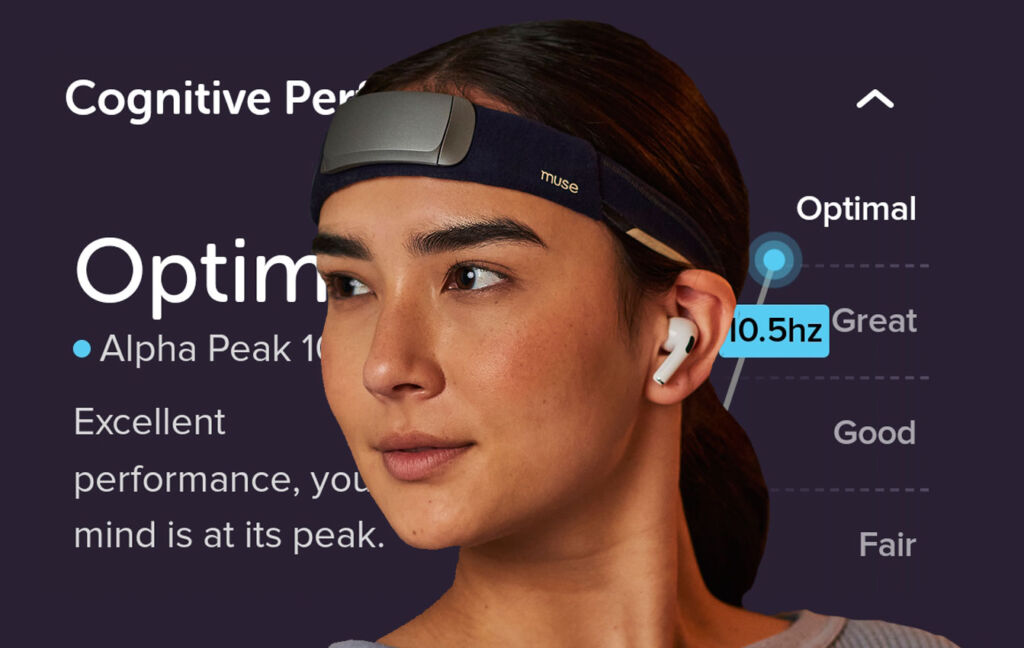
InteraXon’s Muse meditation headbands are almost certainly the world’s most widely used consumer EEG products. Even with a dominant position in the market, the company is not one to rest on its laurels. Earlier this year, it upgraded its software to allow users to monitor individual brainwaves. They’ve now taken the ability to monitor one’s brain health significantly further with a new metric called Alpha Peak, and in this feature, we explain why it is such a game-changer.
Regular readers will know that we are fans of InteraXon’s products. We only recently detailed how they have benefitted us, and we make it no secret that they are an important part of our everyday lives. The company’s EEG products are continuously growing in popularity because they make it simple for all to meditate and monitor their progress.
Thanks to their clever design, affordable pricing and a constant stream of new features in their app, InteraXon’s Muse products have established themselves as the go-to EEG meditation headbands for practitioners from novice to experienced.
Since its inception, the company has barely put a foot wrong. If any gripes could be directed towards it, they would likely have stemmed from experienced meditators who wanted more specific brain data.
Fortunately, InteraXon is a company that encourages feedback, and its programming team has read through the wish lists and has been acting on them.
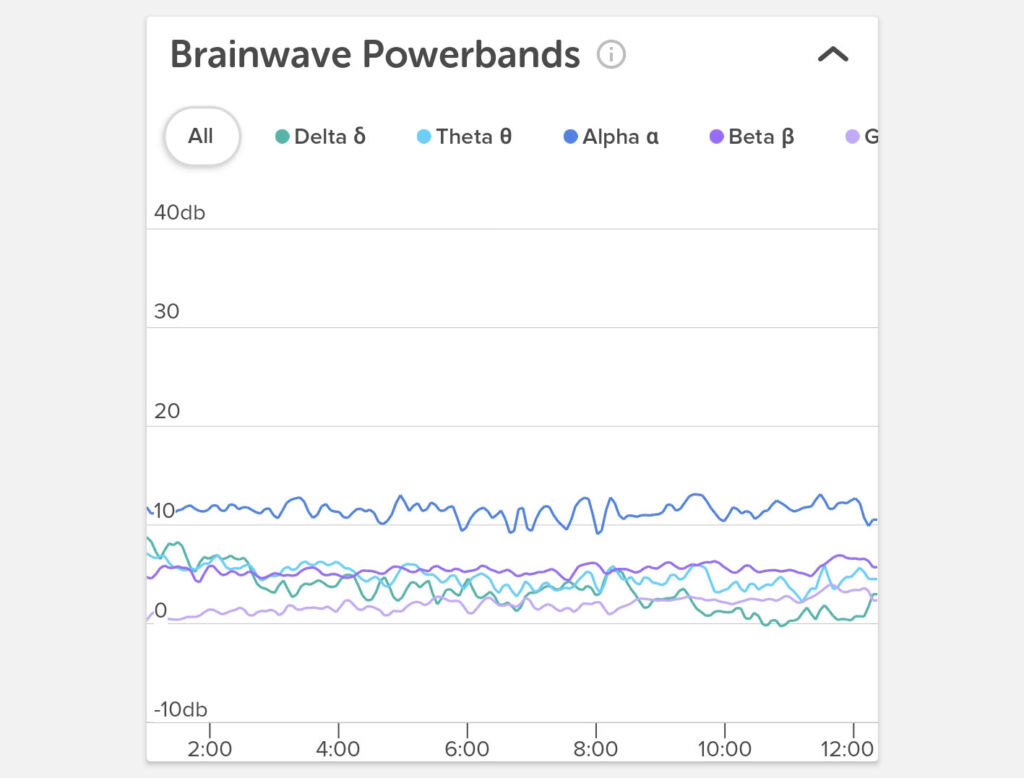
An excellent example of this can be seen in a new addition earlier this year when the company added the ability to see post-practice individual brainwave data. They have now followed this up with what we view as the most important brain health measure: the ability to monitor peak alpha frequency with their new Alpha Peak metric.
The New Alpha Peak Metric
It is generally recognised that the brain produces five types of waves: Delta, Theta, Gamma, Beta, and Alpha. For this feature, the spotlight sits squarely on the Alpha Wave, which occurs between 8 and 12Hz. Above all others, the alpha wave provides the best indication of cognitive performance and is one of academia’s go-to metrics for measuring how well a person’s brain functions.
Some readers might think the new Alpha Peak metric is just a gimmick rather than a genuine benefit. The following should clear up any confusion: A 2016 study involving more than 6,000 participants found that peak alpha strongly correlates with cognitive performance, including memory, overall health, and processing speed.
Every participant in the study was given a numerical score, with a higher score suggesting that the brain could process information faster and a lower one indicating the opposite.
The score, known as peak alpha frequency (PAF), is an accurate, research-backed method of measuring brain performance. Peak Alpha Frequency, or as InteraXon calls it, ‘Alpha Peak,’ offers real-time insight into how your brain is functioning while tracking changes over time.
Neuroplasticity
Throughout my life, I’ve heard the phrase, “You can’t teach an old dog new tricks.” It relates to the common belief that older people become too set in their ways and find learning new things challenging, almost like a mental impairment. However, this is a misconception. The truth is that our brains have the remarkable ability to adapt and change, regardless of age.
This ability is in all of us, and for a long time, the assumption was that only younger people benefitted from it. Science has proven this wrong; everyone has neuroplasticity throughout their lifetime. Monitoring alpha waves allows you to see this in action, and through regular biofeedback meditations, you can help the brain strengthen, form new pathways and best position it to learn new things. In addition, monitoring an Alpha Peak score over time can help you spot any early signs of cognitive decline.
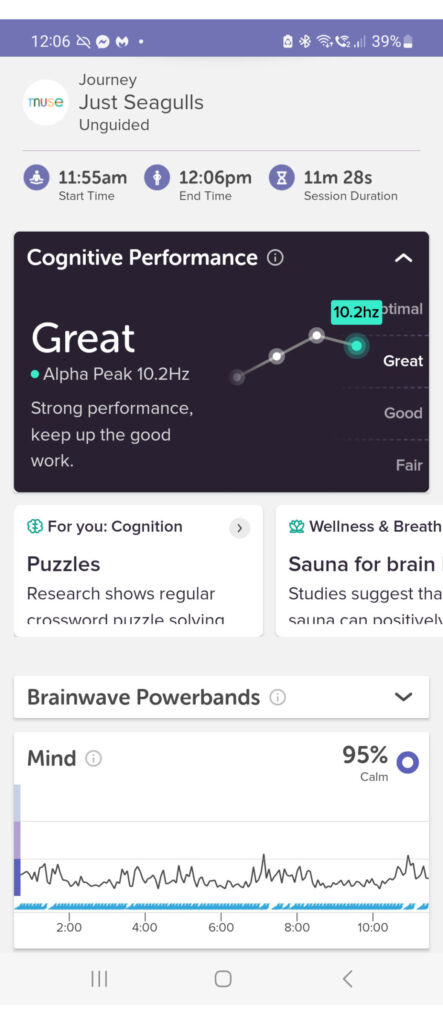
Getting Your Score
Please note that the new Alpha Peak metric with the Muse system is only available to subscribers during biofeedback sessions.
The software must first establish a peak alpha baseline from multiple sessions to obtain your score and rating.
Once this has been completed, after each session, the software displays a numerical score at the top of the screen, along with personalised tips on optimising alpha waves.
My Alpha Peak Experience
As much as I would wish it otherwise, it is a medical fact that age plays a significant role in peak alpha.
In the average person, it continues to increase until young adulthood before peaking at around twenty. After this, it tends to remain constant until around thirty before declining.
As a man in my mid-fifties, expecting an Alpha Peak rating above ‘good’ would be somewhat of a stretch. Nonetheless, I was quietly confident that I wouldn’t embarrass myself, having done more than 2,750 Muse meditations and amassing almost 6 million points and 267,000 ‘birds’ meditating with Muse during the past two years.
Thanks to the brain wave monitoring metrics introduced to the app earlier this year, I knew that my alpha wave power generally hovered around the 10-10.5hz mark, so it would be fair to assume that this would be reflected in my score.
Before starting, I updated the app, checked that the headset’s bios needed no update, and readied myself for the first true insight into my brain health.
Although I hoped to see a score after my first session, the software informed me that it needed to collate a completely understandable ten-session worth of data.
Over the next few days, I produced what was required, and I was delighted to see that my peak alpha was 10.4hz and rated as ‘Great’. It wasn’t soon after that the usual ‘am I capable of more’ thought popped into my mind.
So, the next day, I made it my mission to achieve an ‘Optimal’ rating.
Try as I might, my scores remained pretty much the same, some lower, and I put this down to the ‘trying’.
During a moment of complete clarity, I decided to give it another go; however, this time, it would be without too much focus. Fortunately, this worked, and I am pleased to announce I was rewarded with an ‘Optimal’ rating. I will admit that upon seeing this, I felt rather proud.
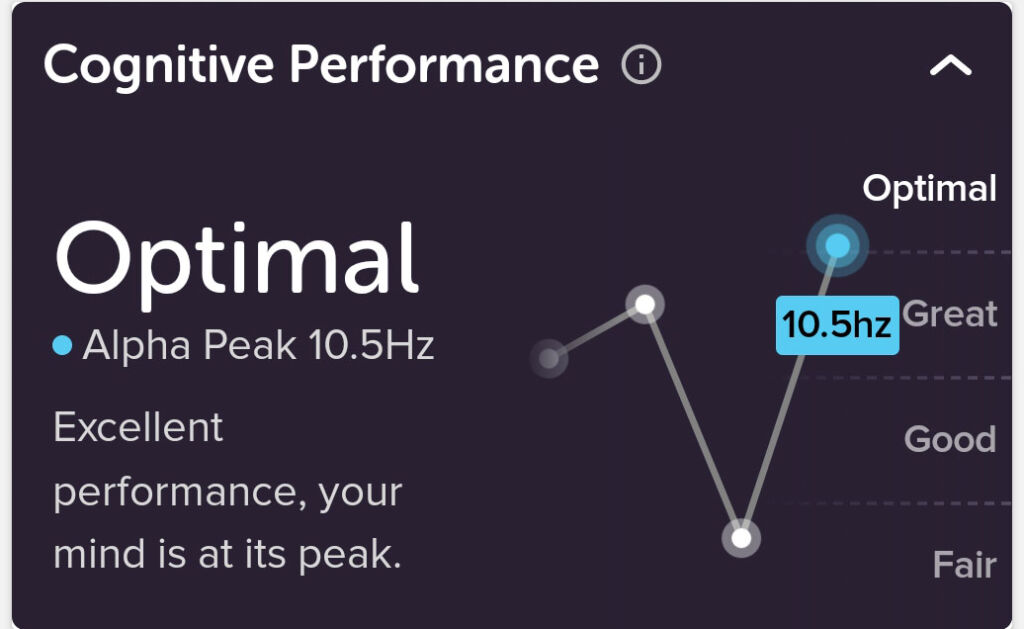
In my attempts to better my score, I noticed what would seem to some to be an excellent meditation doesn’t always equate to a high peak alpha score and classification.
For example, I did a 1hr 15m session without one interruption, during which my mind was calm 97% of the time. Following this, my score dropped to 8.4hz, which was deemed to be only ‘Fair’.
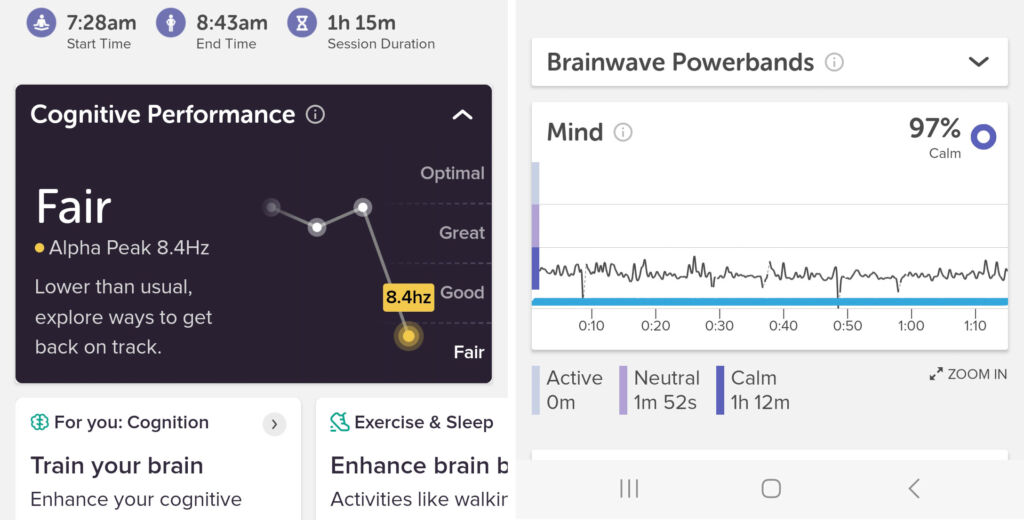
Upon checking the individual brainwave graphs, I noticed several significant data drop-offs, which were likely the culprits behind my low Alpha Peak score. Therefore, if your score and rating are lower than expected, double-check your connection quality.
Another interesting point is that the levels for the score and rating change based on the most recent data; the levels are not ‘set in concrete’ following the first data collation.
For example, when I received my first score of ‘Great’, it was based upon an Alpha Peak of 10.2hz, and for me to get an Alpha Peak rating of ‘Optimal’, I needed to reach at least 10.5hz. However, likely due to my less-than-stellar Bluetooth connection quality, which resulted in multiple sub-10hz readings, the level for me to get an ‘Optimal’ rating is now at a lower 10.0hz.
In addition to making sure you have connection quality, other factors can prevent you from achieving a good Alpha Peak score. These are:
- Mental fatigue
- A poor diet
- Some neurological conditions
- Distractions, such as too much noise
- Abuse of alcohol and substances
- Poor sleep
- A sedentary lifestyle
- and anxiety and stress.
Final Thoughts
Hundreds of millions worldwide have incorporated meditation into their lives. InteraXon’s recent addition of Alpha Peak makes it even more essential for those serious about monitoring and improving their mental health to have a Muse headband and, better still, a subscription in their meditation arsenal.
Far too many of us focus on visual aspects. Yes, we can monitor some of our internal workings, such as the health of our heart, breathing capacity, blood oxygen levels, and other aspects of our health via bodily fluids. However, until now, monitoring brain health has remained the domain of specialist clinics. I ‘Doff my hat’ to InteraXon for introducing Alpha Peak into its software at a price point that is affordable for many.
Please note that InteraXon’s Alpha Peak metric is only available to subscribers. To learn more about the company and its goals and to purchase products or a subscription, please visit www.choosemuse.com.
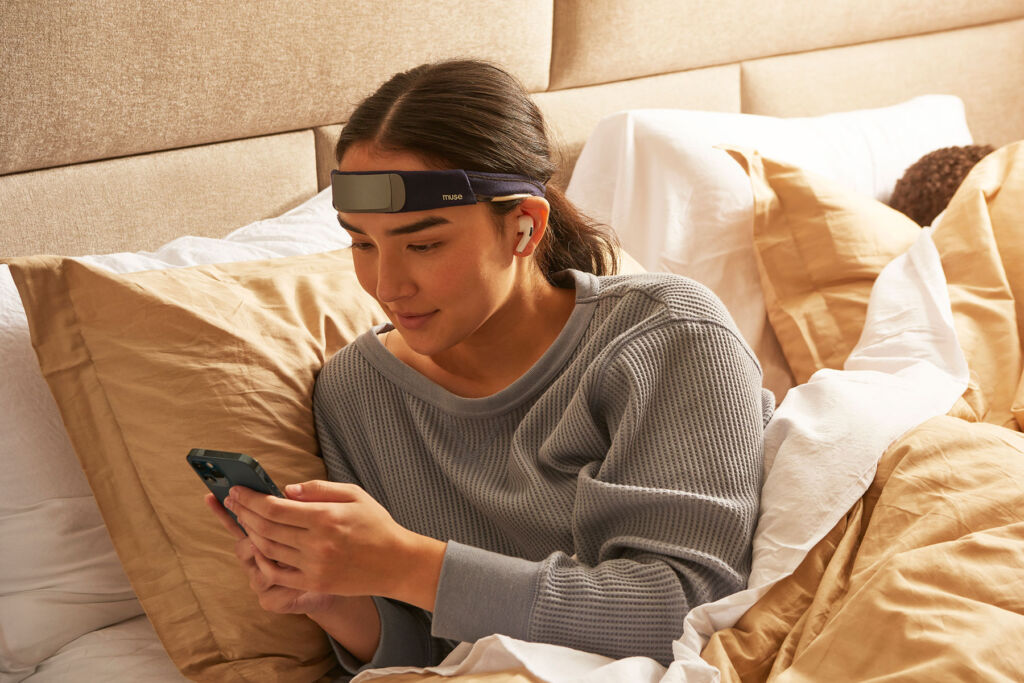
![]()




You must be logged in to post a comment.